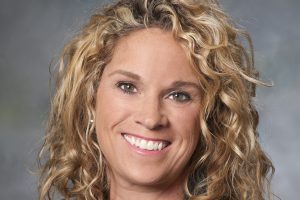In today’s senior living market, risk exists in all senior living options, which include independent living, assisted living, memory care, and skilled nursing. Resident care needs, regulations and risk management processes differ among all of these four levels of living. Risk managers historically have focused on implementing safe and effective care practices, preserving financial resources, and maintaining safe working environments for health care environments. In 1972 the federal government enacted specific requirements for nursing homes and around that same time, the first assisted living community opened[1]. One constant in senior living is that the skills and expertise of a risk manager are vital to an organization.
Risk Manager Roles and Responsibilities
The role of the senior living risk manager may vary from the traditional role in the hospital setting. The risk exposures may differ and so the risk management position in senior living is evolving. The risk manager in senior living may also have other nursing or administrative job responsibilities and the position may not be solely dedicated to risk management
In senior living and many other health care settings, risk managers play a vital role in day-to-day operations. Risk managers are often called upon when litigation is pending during the discovery, deposition or litigation process to clarify an asserted claim. A successful risk management program may result in fewer lawsuits, fewer claims, improved clinical performance, improved employee morale and resident satisfaction measures.
Areas of risk management responsibility in senior living may include:
- Loss prevention and reduction
- Design and implementation of comprehensive orientation programs for new and existing associates
- Development and implementation of loss prevention training programs for providers and staff
- Implementation and oversight to event reporting systems
- Research, writing, or assisting with developing policies and procedures to minimize loss
- Participation in organizational committees that promote loss prevention and reduction
- Direct oversight and implementation of the organization Enterprise Risk Management process
Risk Manager Goals
The goals of a clinical risk manager are to avoid and mitigate risk, ensure safe and effective care, and implement optimum clinical performance. All activities require a shift from the traditional risk management approach of being reactive to adverse events to becoming more proactive through a comprehensive assessment and performance-based approach.
Risk management specifically is concerned with improving the quality and safety of health care services by identifying the circumstances and care outliers that place residents at risk of harm and then acting to prevent or control those risks.
Risk Managers Four-step Process to Manage Clinical Risks
1. Identify the risk
2. Assess the frequency and severity of the risk
3. Reduce or eliminate the risk
4. Assess the costs saved by reducing the risk or the costs if the risk eventuates
The success of a risk management program depends on creating and maintaining safe systems of care and processes designed to reduce adverse events and improve organizational performance.
Effective risk management involves all levels of care in Senior Living, so all healthcare associates must understand the objectives and relevance of the risk management strategies and relevance to their work position responsibilities and competencies.
Due to Resident clinical complexities and the increase in regulatory scrutiny in senior living, risk management oversight is becoming increasingly necessary. Although senior living providers offer differing levels of care, many of the clinical and safety risks have similarities.
The CNA aging service report[2] and the WTW Senior Living Claims Benchmarking Study[3] highlight many similarities of risk that result in claims. Both reports identified that Resident falls are the highest driver of claims and pressure injury, or wounds is another condition where senior living operators experience loss. In addition, the cost exposure for wounds has a higher average claim severity of $230,000 compared to $155,000 for falls.
Often, senior living and skilled nursing are categorized to be the same level of care. It is important for the risk manager to understand the distinct differences in care levels and to know that each level of care will require a different approach to risk management and risk mitigation processes. One known factor is that at each level of care, there is risk which needs to be identified, analyzed, monitored and managed.
The following graph is a breakdown of the senior living levels of care. It provides examples of clinical and safety risk exposures and requirements for quality improvement activities unique to the level of care setting.
| Skilled nursing | Assisted living (AL) | Memory care (MC) | Independent living | |
| Demographics | There are about 15,700 skilled nursing centers nationwide providing care to more than 1.4 million people in the United States[4]. | There are nearly 30,000 assisted living communities in the United States serving more than 810,000 residents[5]. | Many assisted living communities have memory care units. | Data for independent living settings is fluid and not required as the licensed facilities. |
| Demographic regulations | Skilled nursing facilities are federally regulated, and some states require a designated risk manager to oversee the risk management program. | State regulated | State regulated. Specific regulations can vary from state to state. | Primarily regulated by building codes and by health inspectors for dining sanitation and food safety. |
| Claims information | According to the CNA Aging Services report[6], assisted living closed claims cost more than skilled nursing claims. | According to the CNA Aging Services report[7], assisted living closed claims cost more than skilled nursing claims. | Claims data does not extrapolate AL/MC data. | According to the CNA Aging Services report[8], independent living claims are a small portion of overall claim volume, large loss activity has driven an increase in the average total incurred ($254,606). |
| Clinical risk – resident falls | Resident falls- nearly half of fall related claims involve the resident’s death.[9] | Resident falls -Remain a persistent risk in aging service accounting for 40.5 percent of all claims. Assisted living claims incur a higher average total paid. (The WTW Benchmarking report found that between 2014 and 2018 that falls accounted for 34% of all losses). | Resident falls pose a significant risk due to spatial awareness, balance, coordination, and other factors related to Dementia and Alzheimer’s diagnosis Alzheimer’s is a factor in 62.8 percent of all fall-related claims.[10] | Residents live independently and may be at risk for clinical exposures due to the aging process. |
| Clinical risk – pressure injury | Prevalence of pressure injury in US Skilled Nursing facilities ranges from 8.2% to 32.2%.[11] | Pressure injury skin breakdown due to incontinence, poor nutrition, and hygiene. | Pressure injury skin breakdown due to incontinence, poor nutrition, and hygiene | Skilled services typically require licenses and certifications. Homecare providers need to adhere to local and state regulations, as well as any requirements set by the independent living community itself. |
| Clinical risk – infection prevention and control | Federal requirements for a full-time infection preventionist. | Some states require an infection preventionist. | Some states require an infection preventionist. | At risk for community exposures. |
| Clinical risk – elopement | Elopement risk. | Elopement risk. | Memory loss wandering and exit seeking and elopement. | Residents must meet cognitive admission criteria and not pose a wandering risk |
| Clinical risk – medical management | Medical management and multiple comorbidities. | Medical management and multiple comorbidities. | Primary diagnosis of Dementia/Alzheimer’s disease progression Mental confusion behaviors. | Residents live independently |
| Clinical risk – medication errors | Medication variance/ med errors licensed staff dispense medications. | Medication administration.Medical technicians may pass medications based on state regulations. | Medication administration.Medical technicians may pass meds based on state regulations. | Residents are independent in medication administration. |
| Clinical risk – abuse | Requirements to report resident abuse, neglect, or exploitation as mandated by state and federal laws. Reporting of abuse is a critical aspect of ensuring resident safety and well-being Reporting requirements can vary based on the jurisdiction and local laws. | Requirements to report resident abuse, neglect, or exploitation as mandated by state and federal laws. Reporting of abuse is a critical aspect of ensuring resident safety and well-being reporting requirements can vary based on the jurisdiction and local laws. | Requirements to report resident abuse, neglect, or exploitation as mandated by state Reporting of abuse is a critical aspect of ensuring resident safety and well-being Reporting requirements can vary based on the jurisdiction and local laws. | Requirements to report resident abuse, neglect, or exploitation as mandated by state. Reporting of abuse is a critical aspect of ensuring resident safety and well-being Reporting requirements can vary based on the jurisdiction and local laws. |
| Clinical risk – antipsychotic drug use | Antipsychotic drug use federal regulations. | Antipsychotic drug use may be state regulated. | Antipsychotic drug use may be state regulated. | Residents self-medicate This is not regulated |
| Clinical risk – ADL (Activity of Daily Living) | Residents can be dependent for ADL. | ADL assistance but not ADL dependent. | ADL assistance but not ADL dependent. | Residents must be capable of performing basic activities of daily living such as bathing, dressing, grooming and meal preparation. |
| Clinical risk – staffing shortages | Staffing shortage risk.RN (Registered Nurse) availability eight hours minimum standards. | Staffing shortage risk.RN staffing requirements vary by state minimal RN hours required | Staffing shortage risk.RN staffing requirements vary by state minimal RN hours required. | May rely on home health services and be exposed to staffing shortages.No nursing requirements. |
| Resident safety | EnvironmentAccidents hazards.Assistive device usage.Surrogate decision maker.Security system failures. | EnvironmentAccidents hazards.Assistive device usage.Surrogate decision makerSecurity system failures. | EnvironmentAccidents hazards.Assistive device usage.Surrogate decision makerSecurity system failures. | EnvironmentAccidents hazards.Assistive device usage.Must be independent decision makerSecurity system failures. |
| Quality Assurance Performance Improvement (QAPI) | QAPI is a federal requirement.Public reported Quality Indicators which are compared to other skilled nursing centers across the United States. The Quality Measures monitored by the local health department are used for survey performance measures.Nursing home comparison data is available Requirements on reporting adverse events. | No federal QAPI requirements. No Public reported Quality Indicators No national quality data and reporting requirements Requirements on reporting adverse events. | No federal QAPI requirements No public reported Quality Indicators.No national quality data and reporting requirements.Requirements on reporting adverse events. | No federal QAPI requirementsNo Public reported Quality Indicators.No national quality data and reporting requirements.Requirements on reporting adverse events based on local jurisdiction and state laws (see abuse). |
| Risk Manager duties | Risk managers should focus their efforts on the clinical risk, grievance, and safety areas to mitigate claim severity and loss. | Risk managers should focus their efforts on clinical risk, grievance, and safety areas to mitigate claim severity and loss. | Risk managers should focus their efforts on clinical risk resident grievance, and safety areas to mitigate claim severity and loss. | Risk managers should focus their efforts on resident grievance, safety, and accident trends to mitigate claim severity and loss. |
Reducing Risk Strategies for All Senior Living Levels of Care
Risk reduction strategies are necessary.The following strategies can steer senior living risk management efforts and improve resident safety:
- Culture of safety throughout the communities
- Leadership communication and teamwork
- Policy and procedure development on clinical and safety risk
- Adopt residents as partners in resident safety
- Early, reporting, and timely incident investigation and resolution
- Safety event reporting
- Comprehensive admission screening
- Realistic expectations
- Electronic medical record adoption and a secure documentation system
- Employment engagement strategies
- Associates education about how to report known risks or hazards in the workplace
- Accurate and complete medical records
- Associates education regarding when and how to ask for help from a supervisor, senior clinician and other health care professionals
- Participation in meetings that discuss risk management and patient safety
- Responding appropriately to patients and families
- Conducting annual risk assessment and gap analysis
- Contracting your brokers risk manager for insight in developing a formalized risk management process
Quality Assurance Process Improvement Recommendations
Quality improvement regulations are federally enforced for skilled nursing, however, assisted living, memory car, and independent living do not have quality improvement federal mandates. State regulations exist for assisted living and memory care but often do not require a formalized quality improvement process.
Quality Performance and Process Improvement Recommendations
- Apply a Quality Assurance Process Improvement process to all levels of care as best practice
- Implement a formal process for a daily standup meeting for all levels of care
- Bring community leaders together to review a three-part plan to promote situational awareness, mutual support and proactive risk identification
The plan can be achieved by:
- Looking back at what occurred in the past 24 hours involving safety or quality
- Looking ahead and determine what is expected to occur in the next 24 hours.
- Following up on the status of key performance indicators from each department
- Utilize findings from clinical reports, resident satisfaction surveys and grievance reports and include them in QAPI projects
- Protect all QAPI work projects by including legal counsel guidance. Place corporate confidentiality language on work projects, audit tools, etc.
Conclusion
As we look toward the future, the senior living communities that improve their risk management procedures will become more standardized, flexible, and better positioned for long-term success. Managing the numerous risk exposures in all levels of living is critical to the organization’s success.
Senior living providers should work closely with their insurance brokers for clinical risk guidance to support their overall operations. Risk managers will provide resources and support to set the tone for a culture of safety foundation throughout the community. Underwriters look favorably on organizations that have a risk management professional to guide internal preventative and risk mitigations strategies. The role of a risk manager should be a top priority for senior living providers to effectively manage and mitigate risk exposures in all senior living levels of care.
References
[1] https://rincondelrio.com/2017/06/18/the-history-of-nursing-homes-from-almshouses-to-skilled-nursing/
[2] Aging services 2018 claim report. Customized business insurance. (n.d.). Retrieved November 11, 2022, from https://go.cna.com/2018.10.29_KD_AgingServices-ClaimReport_200GatedLP.html
[3] Dodge, L. (2021, December 10). Senior living 2021 claims benchmarking study. LTCi Summit. Retrieved November 11, 2022, from https://ltcisummit.com/2021/senior-living-2021-claims-benchmarking-study/
[4] Nursing homes. Senior Advisor. (n.d.). Retrieved November 11, 2022, from https://www.senioradvisor.com/nursing-home
[5] Rubin, E. (2022, February 16). Current data trends and projections. Consumer Affairs. Retrieved November 11, 2022, from https://www.consumeraffairs.com/assisted-living/statistics.html
[6] Aging services 2018 claim report. Customized business insurance. (n.d.). Retrieved November 11, 2022, from https://go.cna.com/2018.10.29_KD_AgingServices-ClaimReport_200GatedLP.html
[7] Aging services 2018 claim report. Customized business insurance. (n.d.). Retrieved November 11, 2022, from https://go.cna.com/2018.10.29_KD_AgingServices-ClaimReport_200GatedLP.html
[8] Aging services 2018 claim report. Customized business insurance. (n.d.). Retrieved November 11, 2022, from https://go.cna.com/2018.10.29_KD_AgingServices-ClaimReport_200GatedLP.html
[9] Aging services 2018 claim report. Customized business insurance. (n.d.). Retrieved November 11, 2022, from https://go.cna.com/2018.10.29_KD_AgingServices-ClaimReport_200GatedLP.html
[10] Aging services 2018 claim report. Customized business insurance. (n.d.). Retrieved November 11, 2022, from https://go.cna.com/2018.10.29_KD_AgingServices-ClaimReport_200GatedLP.html
[11] Yap, T. L. (2019, May). Pressure injury prevention: Outcomes and challenges to use…: Journal of Wound Ostomy & Continence Nursing. LWW. Retrieved November 11, 2022
Rhonda DeMeno, RN, MS,MPM, BSHRM, CBIC, CPHRM, has more than 30 year’ senior living experience as a health care risk manager, regulatory compliance expert and operations leader. She has served as an operational leader in acute care, home health, hospice, and managed care provider settings. Director of Clinical Risk for Senior Living at WTW, she provides support and resources to senior living clients. She is the host of The Senior Podcast Series, has authored many professional industry communications and is a frequent speaker at industry events focusing on infection control, regulatory compliance and disaster response and preparedness.
Joan Porcaro, RN, BSN, MM, CPHRM, is director of Client Relationship Management, Clinical Risk Management Consulting at WTW. She is responsible for providing support and resources in loss prevention to health care clients to assist them in better managing and reducing their risks. With more than 30 years of experience, she has served serving as System Director of Risk Management and Patient Relations for a multi-hospital organization responsible for a team of 30 risk managers, risk management specialists and variance specialists dedicated to support a multi-state hospital system comprised of acute care and critical access hospitals, physician practices, urgent care, long term care, cancer treatment, home health and hospice.








